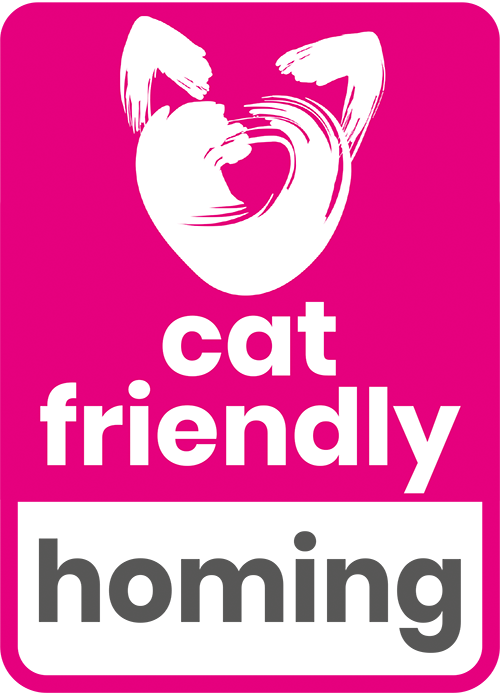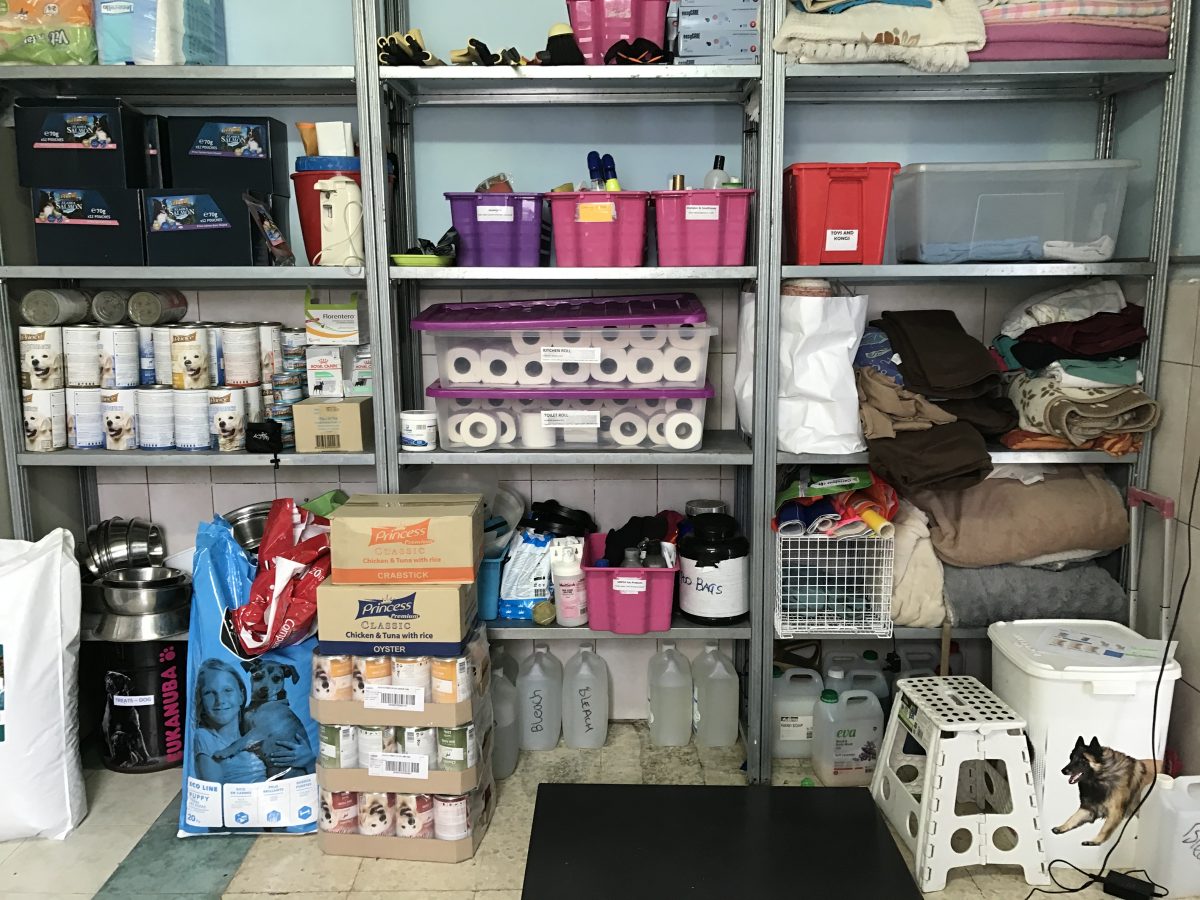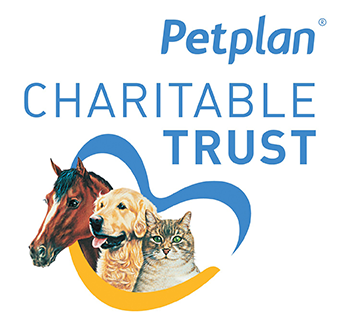 Becoming a Cat Friendly Homing Centre
Becoming a Cat Friendly Homing Centre
While you are going through the process of finding homes for the cats currently in your care, you also need to consider other factors to ensure you are ready to become a Cat Friendly Homing Centre. One of the great advantages of being Cat Friendly is that you will not need to build bigger premises, as much of your work will be in the community and the use of foster homes will increase. However, you should take a good look at your homing centre from a cat friendly perspective and make any changes to benefit the cats’ welfare.
Premises
- Are there dogs housed nearby that stress cats? Can you do anything to reduce the noise?
- Do you have shared/group housing? As this is distressing for most cats look at ways you can create single housing within this. Moving cats into their own accommodation can transform their behaviour and greatly increase their chance of being rehomed
- A calm and well-organised homing centre is welcoming to people and supports good cat welfare. Sometimes when you are very busy, keeping the centre tidy can be a low priority, but these simple and easy tasks can have a big impact on the impressions of visitors and staff

A tidy store room saves time in the long run as everything has its place and is easily found
- Try to keep noise to a minimum (music, shouting etc) and stick to routines; cats love tranquility!
- Manage visitors and volunteers to minimise disruption to routines
- Pen/cage set up should be reviewed and a standard approach followed by all staff
- If you have multi-cat housing make sure there are sufficient resources – litter trays, high perches, hiding places etc and place resources carefully to minimise conflict or cats being able to capitalize on certain areas
- If you have single cat housing it may be possible that neighbouring pens/cages can be made larger with access via a cat flap or replaceable door. This allows cats that need more space to be accommodated and is useful for assessing the sociability of cats from the same home to see if they need to be homed together.
| Portalisation of typical stainless steel cages to turn single units into two compartments
https://www.aspcapro.org/webinar/20180118/getting-cats-portalized |
- Review your infectious disease control and make sure that you have the right balance of good infection control against the need for cats to have familiar smells and minimal disruption. Develop a plan for managing infection outbreaks
- Where cats are currently staying, only spot clean to minimize disruption. Make sure the pen is cleaned fastidiously in preparation for a new cat in that pen.
Foster homes
- All intake should be done centrally by staff who assess the cats/kittens coming in and determine those most in need of foster homes and arrange placement
- Ensure fosterers are trained and have guidance, support and regular contact
- Provide socialisation plan for young kittens (this socialisation chart has been developed by the Cats’ Protection)
- For cats that are being fostered ensure the fosterer knows the reason for placing the cat and any actions or observations that are needed
- All adoptions should be organised centrally and not by the foster carer
People
- Communication is key, making sure everyone understands what you are doing and why. Having a strong vision for the future that is shared by managers, staff, volunteers and any other stakeholders is key to successful implementation
- A CFH Coordinator Role can help implement the new ways of working if you have the resources
- You may well find staff, volunteers and the public resist change, especially when you stop taking cats in for a period of time. Focusing on the end result is important – better welfare and outcomes for cats, but it is important to get your current situation under control.
- Staff and volunteers will need training and support and if your homing centre is full then workloads will initially increase until the number of cats goes down. It is important to be consistent and repeat the training as often as needed. Some people will pick it up quickly and they can become your champions and support other staff & volunteers
- Communicate what you are doing with other organisations that may be affected, eg veterinarians, other charities etc. There may be an impact on others if you stop intake. By working together you may be able to achieve more
- Advertise loudly and proudly all the success stories:
- The cat that is homed after a long period in the homing centre
- Cats that are suddenly more relaxed and approachable
- Don’t forget to promote any community-based success – cats homed directly or supported to stay where they are
- Make sure your training of staff and volunteers includes:
- Observing cat behaviour in the shelter environment
- Making TLA/QoL assessments
- Handling cats respectfully
- Keeping objective care notes etc.
- Provide further support/training as needed
- Make sure all staff are familiar with changes/new procedures and monitor their progress, giving positive encouragement constantly and support when needed
- Provide clear escalation procedures (when to involve someone more senior) so that staff know when the limits of their individual capabilities require them to involve other staff or management
- Review staff job descriptions and introduce changes to accommodate a CFH way of working and allocate clear responsibilities and make sure everyone knows who is accountable
- Volunteers also need job descriptions and a code of conduct to follow
- Provide staff and volunteers with good support systems that recognise the impact of welfare work on emotional and psychological wellbeing
- Regular staff discussions and involvement in decision making are key to staff feeling listened too. Difficult decisions such as euthanasia (more common when you have older cats whose condition deteriorates whilst in the homing centre) or significant events (such as failure to notice symptoms of illness) should be reviewed and any changes made to prevent recurrence
- Develop the community outreach role – either as a specific job or as part of other roles. It is an opportunity to look at individual staff to make sure you are making good use of their talents and abilities
- Sometimes staff or volunteers will not feel able to adopt new ways of working and decide to leave. Their decision should be respected and CFH principles must not be changed to cater for individual objections, as this will have a negative impact on cat welfare
- Communication internally and externally will be essential. Develop communications material for the following group:
- General public – Why you are changing/what the impact will be. This will include explaining that empty pens/cages do not mean that cats are not being helped. Success is often associated with homing centres that are overfull and chaotic – this is not good for cats or staff
- Other animal organisations – Why you are changing and the implications for the wider cat population. Plan for collaboration
- Associated organisations – Funders, government (local/national), veterinarians
| The Malta SPCA experience
The principles of CFH were applied at the Malta SPCA from April 2017. The Centre Manager at the time, Ian MacFarlaine had worked on the early part of the CFH project, had made similar changes in a centre in the UK and was also extensively researching models of streamlining around the world, including the Million Cat Challenge (MCC) in the USA. Some of the changes they made:
The results:
|
Systems and Procedures
Ensure you have a system that can record basic data and allow you to analyse activity and trends. This may be manual record cards, a spreadsheet or a ‘shelter software’ system. The system should be able to record standard homing centre data, veterinary care and additional CFH data such as Traffic Light Assessment Reports. It should include inventory, cage record sheets, analysis of intake by reason/date/location, care records and outcomes. It must be able to record cats in foster homes, cats awaiting intervention, cats being supported in the community (eg home to home adoptions) and any TNR/neuter programmes. People should be recorded in the following categories – people relinquishing cats, public reporting cats, foster homes, pet homes, alternative homes and potential homes.
If you have other species to care for and/or legal responsibilities there will be other system considerations.
Collecting data will enable you to review your results; looking at outcomes, length of stay, occupancy rates, return rates, disease outbreaks etc.
Policies that will be useful to develop or revise:
Intake:
- Elderly, stray, feral, sick and injured cats
- Testing – FIV/FeLV
- Pregnant cats – when to spay
- Kittens – especially hand rearing and unsocialized kittens
Care:
- Euthanasia, fostering, neutering (especially kittens and managing long term conditions)
Outcome:
- Adoption – indoor homes, age of kittens etc.
Procedures that will be useful to develop or revise:
Intake:
- Intake paperwork
- Call management system/triage forms
- Community assessment guidance/paperwork/support packages
- Process for admission to homing centre or foster home
- Set up models for low-stress pens/cages
- Initial veterinary input/assessment
- Quarantine arrangements
Care:
- Initial health checks and treatments (fleas/worming etc)
- Cleaning, biosecurity – procedure for specific infections
- Feeding
- Litter/litter trays
- Monitoring – daily observations/care notes/TLA/QoL/medications
- Daily observations can be made on wipe clean cards and recorded on systems weekly
- Actions to determine suitable outcome and plan to find home etc
- Monitoring health/symptoms/escalation procedure
- Caring for specific conditions – eg infectious diseases/chronic illness
- System for managing foster homes
- Good working procedure with veterinarians – shelter medicine approach
- Good handling techniques
Outcome:
- Adoption process and paperwork
- Cat matching to pet homes
- Advice and support packs for new owners
- Follow up – immediately after adoption and beyond
- Adoption problems support pack
- Follow up for spay/neuter by owner or cats needing clinical input
- Procedure for supporting alternative lifestyle homes – ongoing
Make sure staff and volunteers are trained and follow new procedures – especially any biosecurity procedures. This will be especially important for new staff and volunteers.
Other things you may need to consider:
- Look at campaigns based on your specific situation – promoting adoption of older cats, finding alternative homes etc.
- Cat legislation – do you have any? Do you need to work towards this?
- Guide for people feeding free roaming cats
| Do the best you can
You may be reading some of the content on this page and thinking ‘I can’t do that’ or ‘I wish it was that simple!’ We know that life is complicated and when you are dealing with cats (and people) nothing is black and white. Following Cat Friendly principles is all about doing the very best you can under difficult circumstances. So, if you read something and think ‘impossible!’ then maybe consider what you could do instead that would have a positive impact. We know we cannot achieve perfection as it isn’t a perfect world. Be pragmatic and be satisfied with ‘good enough’ when the ideal seems impossible. |




